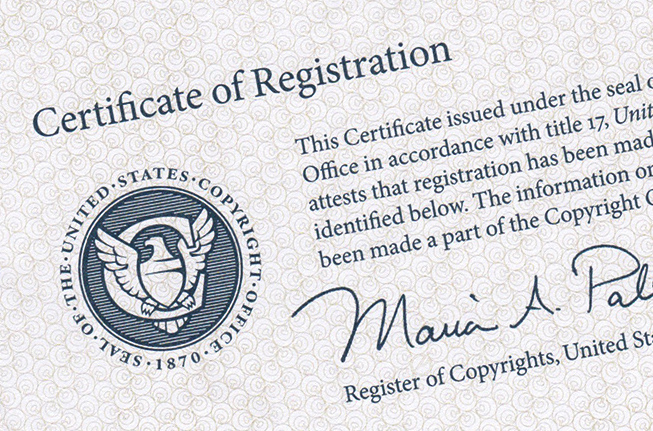The U.S. Copyright Office took an important step forward into the digital world this month. App developers will finally have the ability to protect their intellectual property with the click of a button instead of the lick of (thousands of) stamps.
ACT | The App Association consistently fights for strong copyright protections because they are foundational to rewarding the creativity and innovation that sustains and grows much of the app economy. With the rise of the digital economy and the increasing connectivity of internet-enabled consumer products, copyright protections have become more important for those who utilize this global marketplace.
Whether originating within the United States or abroad, app piracy presents a major threat to the creators of digital content by undermining their ability to innovate, invest, and hire. It also damages end users’ confidence in software-enabled products and services. When consumers are victimized by sellers of pirated content or malware, it leads to customer data loss and interruption of service. For app makers, pirated software results in revenue loss and reputational damage. Also, with the rise of enterprise mobile app development, pirated apps are being used as a means to attack mobile users of an entire enterprise.
The app industry did not exist when the Digital Millennium Copyright Act (DMCA) became law in 1998, but the DMCA has proven effective and flexible enough to provide for and deal with continued innovation in the tech sector as well consumer protection. For example, the DMCA provides a mechanism to request the takedown of infringing materials hosted on a website or platform. The DMCA also provides websites and other “service providers” (anyone who allows users to post or store material on their systems, and search engines, directories, and other information location tools) with the ability to protect themselves against claims of copyright infringement by appointing an agent—a third party not employed by the service provider–to receive take-down notices before infringing content is removed.
Until recently, service providers seeking this safe harbor protection were required to send a physical, signed document by mail to the Copyright Office. This document identified to whom a take-down notice should be sent, and the information was published on the Copyright Office’s website in a public database for rights holders to consult in the event they needed to send a take-down notice to a service provider. This antiquated system resulted in an online searchable database that was not user-friendly (for example, many fields were not searchable), often contained outdated or erroneous information, and made it difficult for copyright owners to send take-down requests to protect their work.
But the Copyright Office is changing that! As of December 1, 2016, a new mandatory online registration system for the DMCA has been implemented to replace the one maintained since 1998. In order to enjoy the DMCA safe harbor, it is now a prerequisite for service providers to designate an agent to receive take-down notices and enter this information into an online database that must be updated every three years (at minimum). You can access this database and further information about this change at: https://www.copyright.gov/dmca-directory/.
App Association members can now know they will be able to submit DMCA take-down notices more easily and accurately through accessing this new Copyright Office database. And those who qualify as service providers seeking safe harbor protection must comply with the new registration requirements.
We urge members to reach out to App Association staff with any questions. We will continue to work to ensure strong intellectual property protections for the continued growth of the app industry.
